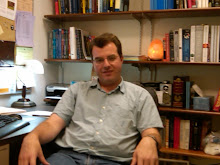The next section of Hofstadter's documentary history of American higher education deals with the movement toward non-denominational institutions. The pre-Revolutionary portion of the 1700's saw intense debates over whether institutions of higher learning should favor one particular Protestant sect or be open to all sects. The majority view favored non-denominational institutions, though there were arguments that the best way to protect freedom of conscience was through denominational institutions, to avoid compromises. The most vocal debates seem to have been over Columbia University (then called King's College), which ultimately settled on a non-denominational approach. Brown chose to have explicit religious quotas on its board of trustees, so that all of the major Protestant sects would be represented.
It would be easy to look back at these debates over which Protestant white males to favor and see a hopelessly unenlightened society. If we look only at where the society was at in its evolution then I agree with that criticism. However, if we look at the pace of the evolution, and the energy devoted to expanding inclusion, protecting conscience, and checking sectarian forces that could fuel conflict, then there is much to praise in the movements of that time. It was a time of great progress and great energy for reform. If they did not go as far as we have gone it is only because of where they started, and not for lack of attention to inclusion across social and ideological divides and the implications thereof.
On the other hand, while this attention to matters of inclusion bears much resemblance to academic concerns of today, there is one crucial difference: They were not seeking to achieve a balance of Protestant sects, just to allow a balance of Protestant sects. They were inclusive in spirit but there was no affirmative action here. I use the phrase "affirmative action" not in any loaded sense involving trade-offs in admissions criteria, but only in the sense that there was no deliberate action. They allowed people of many sects but did not express any urgency about seeking out a balance among students of many sects. They wanted colleges and universities that stayed out of sectarian conflicts, not colleges and universities that sought to redress conflict by enrolling balanced student bodies. For all of the parallels with the modern dialogue on inclusion and diversity in academia, this is one key difference.
Subscribe to:
Post Comments (Atom)



No comments:
Post a Comment